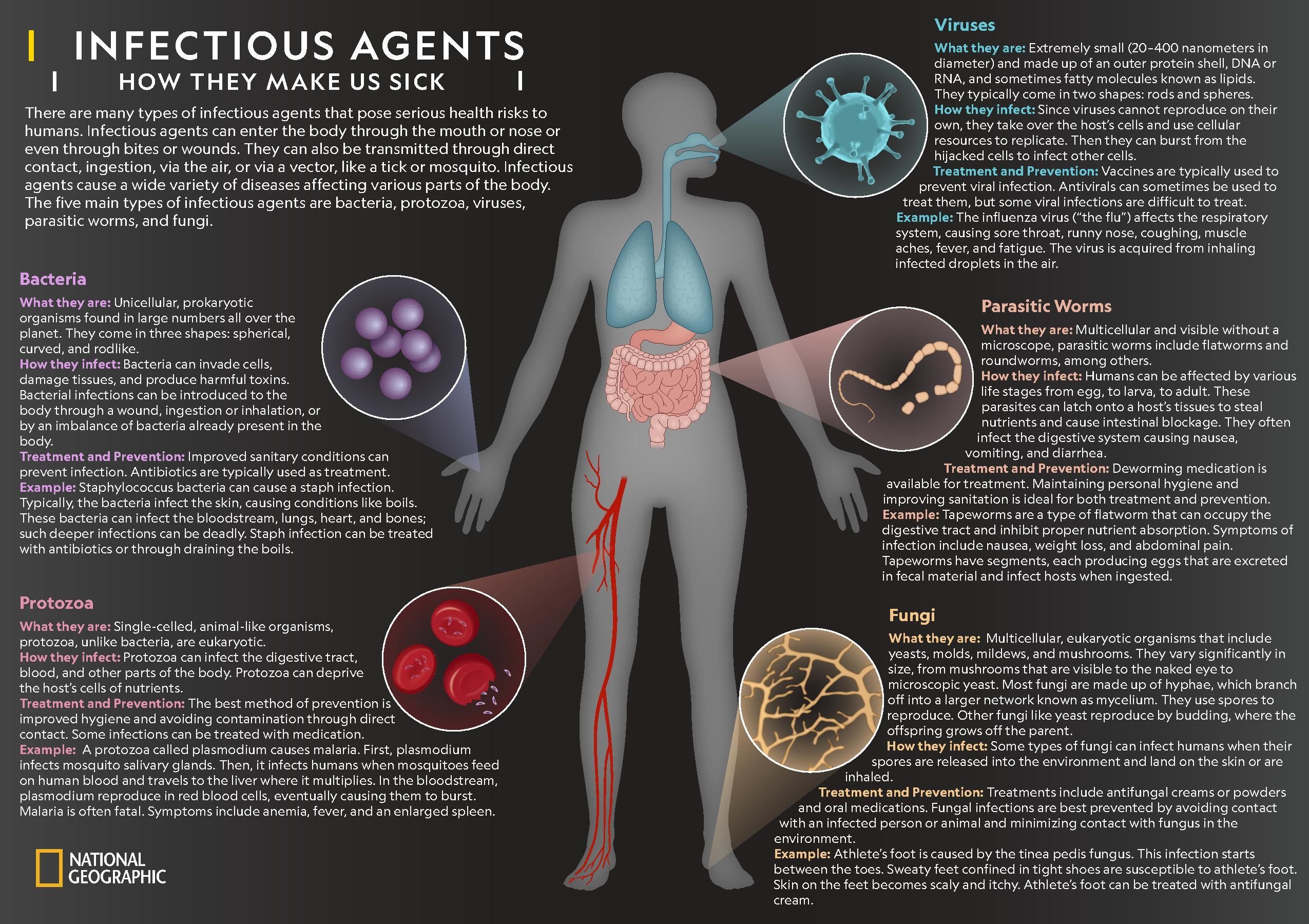What Characteristics Can Be Used to Describe Infectious Agents
Describe the circumstances when respirators and surgical masks should be used. Zoonotic Pathogens in Wildlife.

Classification Of Infectious Diseases Based On Their Causative Agents Download Scientific Diagram
For human cell lines it is relevant to describe the following characteristics of the original donor.

. Coli Klebsiella spp and other members of the Enterobacteriaceae Enterococcus spp Staphylococcus spp Streptococcus spp and Candida spp. Transmission has been documented in health-care settings where health-care workers HCWs. However superinfection of the pancreas is most often caused by gastrointestinal flora such as E.
Rickettsia typhi and R. In order for plasmids to replicate independently within a cell they must possess a stretch of DNA that can act as an origin of replicationThe self-replicating unit in this case the plasmid is called a repliconA typical bacterial replicon may consist of a number of elements such as the gene for plasmid-specific replication initiation protein Rep repeating units called iterons DnaA. These diseases make up approximately 60 of all infectious diseases and an estimated 75 of recently emerging.
Nawtaisong P Robinson MT Khammavong K Milavong P Rachlin A Dittrich S et al. Were the most frequently detected infectious agents found in 201 of animals. Vesicles move toward the plasma membrane and then meld with the membrane ejecting their contents out of the cell.
Agents from a viral seed to within an acceptable safety margin this approach could be used to qualify a seed. These findings suggest a substantial risk for exposure through handling and consumption of wild animal meat. Antimicrobial drugs can be divided into three main groups based on pharmacodynamic characteristics that affect bacterial clearance.
Felis were also detected. Necrotic tissue or pancreatic. Zoonosis is the term used to describe any infectious disease that is naturally transmissible from animals to humans.
Clinicians should be aware that. Infectious agents associated with acute pancreatitis are numerous and diverse. Infections can be caused by a wide range of.
If you are planning to perform seed purification. Specifically for human diploid. Tissue or organ of origin ethnic and geographical origin age sex and general physiological condition.
Exocytosis is used by cells to remove waste products and may also be used to release chemical signals that can be taken up by other cells. Chapter 7 Tuberculosis Infection Control. An infection is the invasion of an organisms body tissues by disease-causing agents their multiplication and the reaction of host tissues to the infectious agents and the toxins they produce.
In addition to a plasma membrane some eukaryotic cells have a cell wall. Cultured material containing large quantities of agent can undergo analyses to determine characteristics such as. If known the state of health or medical history of the donor should be reported along with the results of any tests of the donor for pathogenic agents.
Can be transmitted in virtually any setting. 31 The first group consists of drugs that exhibit mainly time-dependent bactericidal action that has only a minimal relationship to drug concentrations that are greater than the MIC eg beta-lactam antibiotics and. An infectious disease also known as a transmissible disease or communicable disease is an illness resulting from an infection.

Infectious Agents National Geographic Society

No comments for "What Characteristics Can Be Used to Describe Infectious Agents"
Post a Comment